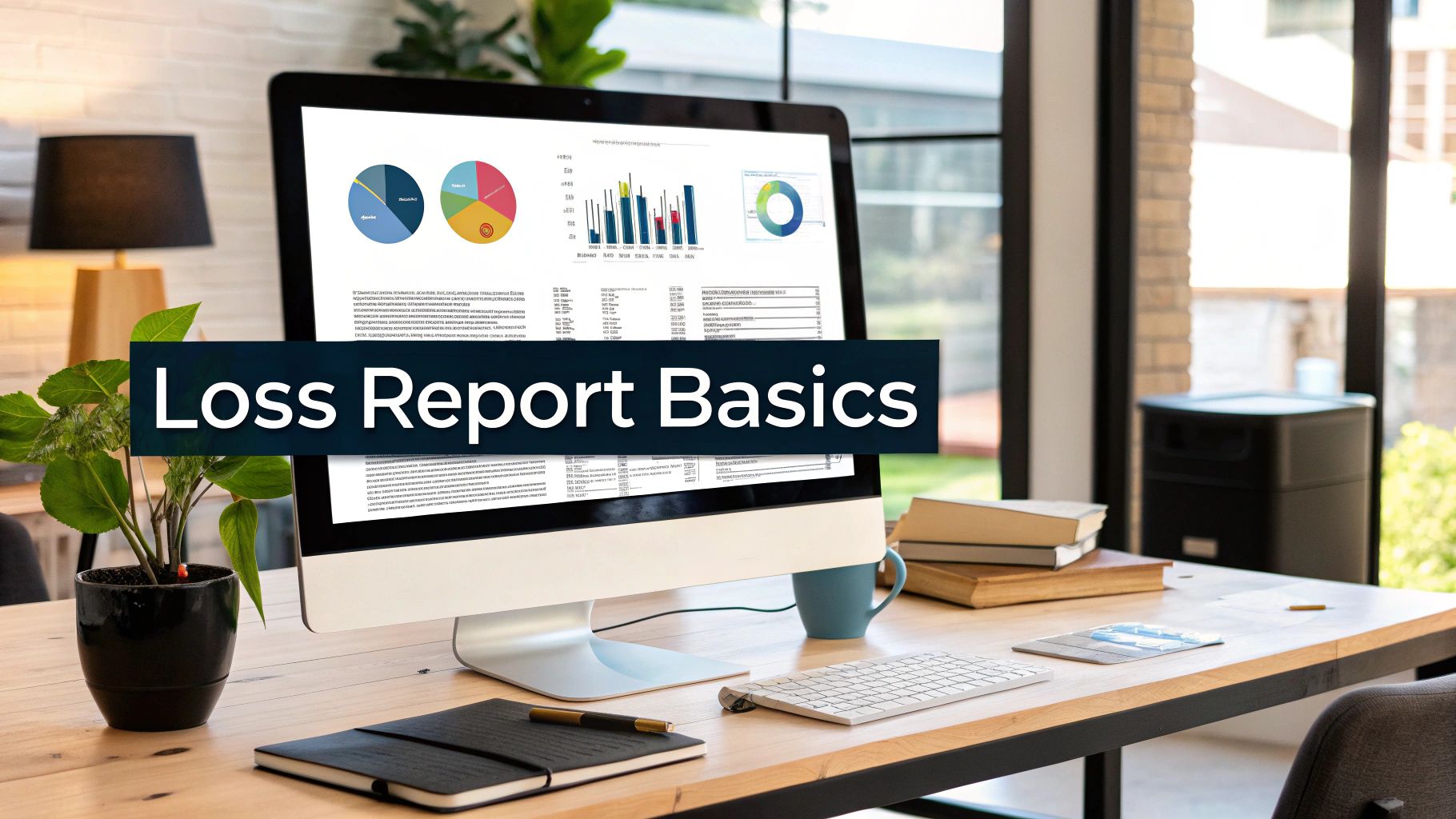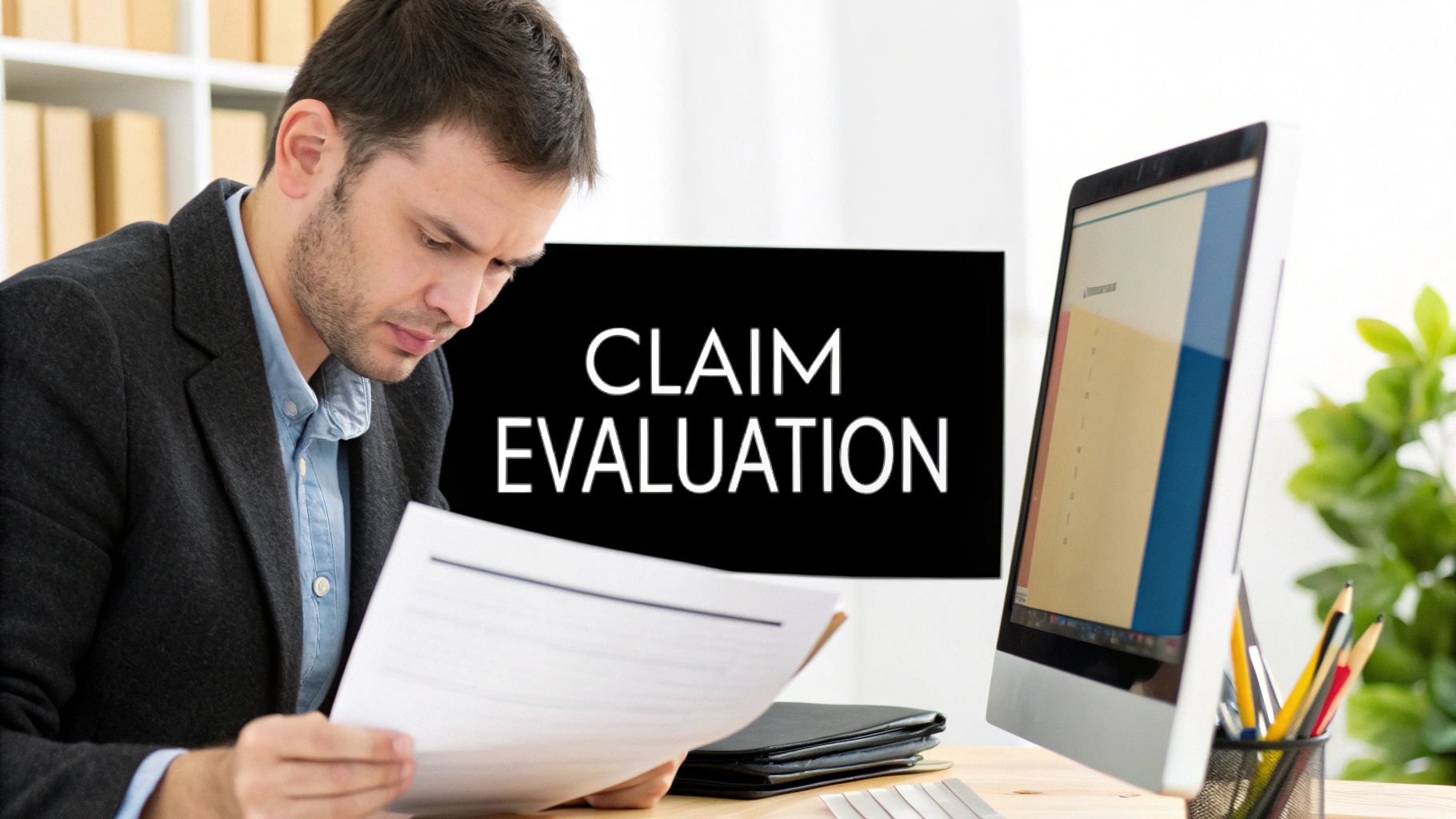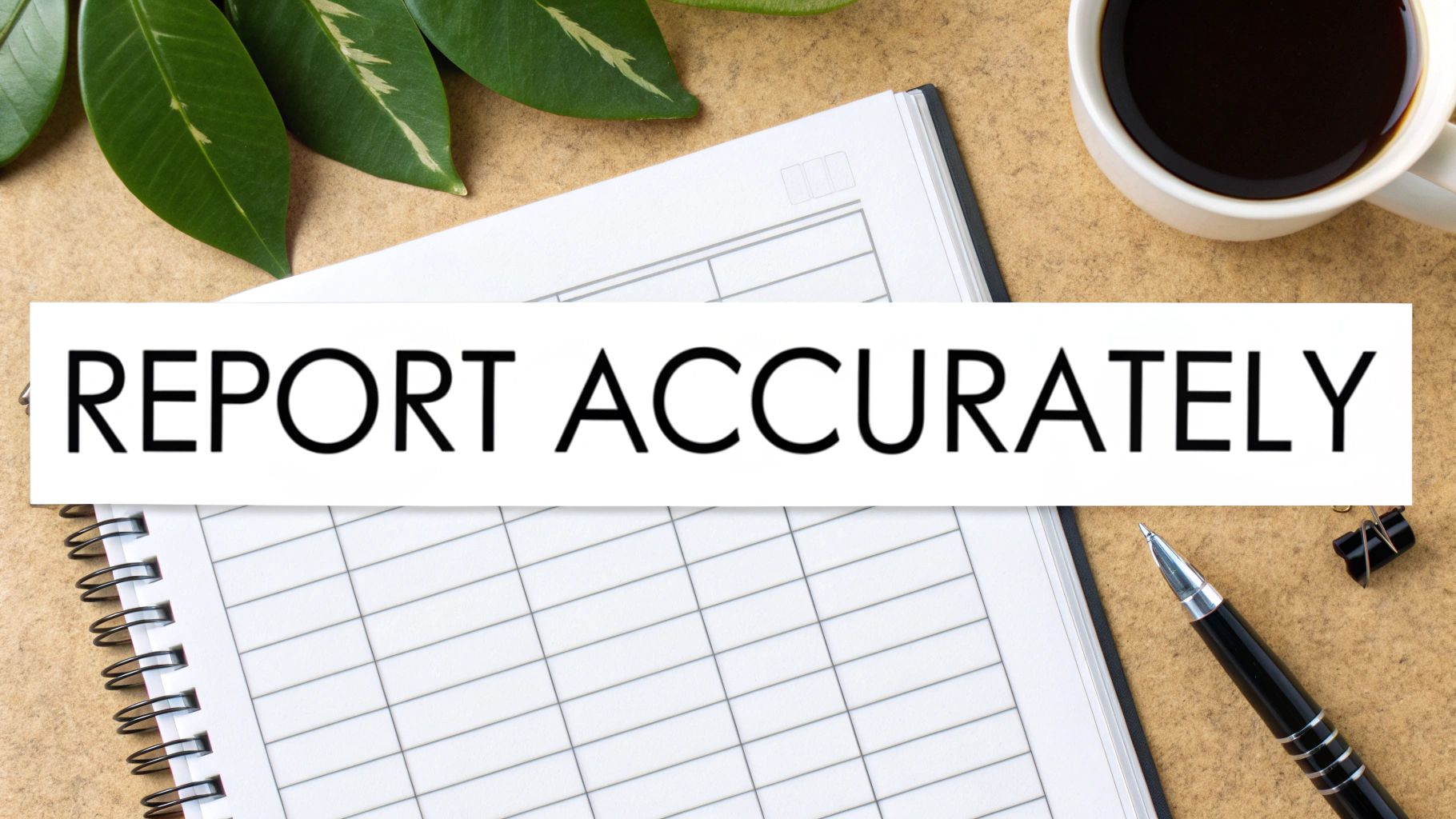The Art and Science of Loss Report Insurance
Filing a loss report insurance claim can be a stressful experience, often filled with paperwork and complex procedures. Understanding what makes a strong loss report is essential for navigating this process successfully. It involves more than just filling out forms; it requires an understanding of what insurance providers look for.
Deconstructing the Loss Report
Different types of insurance, such as property, auto, and liability, require different loss reports. For example, a property loss report after a fire needs detailed documentation of damaged items. An auto claim, on the other hand, requires a precise description of the accident. Understanding the specific requirements of your policy is crucial for a successful claim.
Each insurance provider may also have its own specific requirements for loss reports. Carefully reviewing your policy details and contacting your provider for clarification is always recommended.
The Psychology of Claims
Claims adjusters evaluate the credibility and validity of your claim. A well-organized, detailed, and factual loss report builds trust and demonstrates legitimacy. Conversely, incomplete or inconsistent information can raise concerns and lead to delays or denials. Meticulous documentation and clear communication are vital throughout the process.
The rising cost of natural disasters further emphasizes the importance of robust insurance coverage. Between 2014 and 2023, annual global insured losses averaged $121 billion, rising to $146 billion between 2017 and 2024. More detailed statistics can be found here: https://www.propertycasualty360.com/2025/01/23/global-insured-losses-from-natural-catastrophes-nearly-30-above-average-in-2024/
Time Is of the Essence
Timelines are critical in loss report insurance. There are often deadlines for reporting losses, submitting documentation, and responding to inquiries. Missing these deadlines can jeopardize your claim. For example, failing to report a car accident within a specified timeframe could lead to denial.
Understanding and adhering to these timelines is paramount. Prompt reporting often allows for faster processing and potentially quicker settlements. This underscores the importance of taking immediate action after a loss.

From Incident to Action: Filing Loss Report Insurance Claims
When disaster strikes, understanding how to file a loss report insurance claim can be a daunting task. The first 24 hours after an incident, whether it's property damage, a car accident, or business interruption, are crucial. Knowing the right steps to take immediately can significantly affect your claim's outcome. This includes understanding the specific information insurance representatives need and using digital tools to efficiently document everything, especially while you're still dealing with the aftermath of the event.
Initial Steps After an Incident
Regardless of the type of loss—from minor damage to your home to large-scale disasters—some steps should always be taken within the first 24 hours:
- Contact your insurance company right away: Reporting the incident promptly starts the claims process.
- Document everything: Take photos and videos of the damage. Make a detailed list of all lost or damaged items.
- Gather supporting evidence: This might include police reports, medical records, or any other documents related to the incident.
Taking these initial actions sets the stage for a smoother claims process. Having a clear plan is essential.
Navigating Different Claim Scenarios
Different incidents require different approaches to filing loss report insurance claims. A minor fender bender, for example, needs less documentation than a house fire. However, the core principle remains the same: provide detailed and accurate information. For insights on choosing the right insurance policy, check out this resource: How to find the best insurance policy for 2025.
Consider these examples:
- Property Damage: Thoroughly documenting the damage with photos, videos, and repair estimates is essential.
- Vehicle Accidents: Collecting police reports, witness statements, and medical records is key.
- Business Interruptions: Showing the financial impact of the interruption with business records is critical.
Understanding these nuances helps you tailor your loss report to each unique situation. Knowing how claims professionals track your submission internally can also help you anticipate their needs and provide the right information proactively.
Understanding the Claims Process and Expedited Processing
Understanding how insurance companies handle claims can give you an advantage. Claims professionals often use internal tracking systems to manage information. Certain situations, like severe damage or injuries, can trigger faster processing. When filing a loss report, especially regarding disability, resources like Disability Claim Help can be invaluable. Knowing what leads to expedited processing helps you position your claim for a quicker review and resolution.
In 2021, insured losses from natural catastrophes reached $130 billion, 76% above the 21st-century average. This illustrates the increasing financial impact of such events. You can find more detailed statistics here: https://www.iii.org/fact-statistic/facts-statistics-global-catastrophes. The rising frequency and severity of claims emphasize the importance of understanding the claims process and presenting your case effectively. This includes knowing when to manage claims on your own and when to seek professional help. Sometimes, complex situations require expert guidance, particularly when dealing with significant losses or disputes.

Building an Ironclad Loss Report Insurance Case
The difference between a fair insurance settlement and a disappointing one often hinges on the quality of your loss report. A well-crafted report persuades adjusters of the validity and extent of your claim, maximizing your chances of a favorable outcome. This section explores how to build an ironclad case.
The Power of Persuasive Documentation
Claims professionals are swayed by clear, concise, and complete documentation. Think of your loss report as a visual narrative of the damage. Go beyond basic snapshots and document the sequence of events.
For instance, if a burst pipe caused water damage, photograph the pipe, the accumulating water, and the damage to furniture and flooring. This sequential approach helps establish a clear timeline and a cause-and-effect relationship.
Meticulous inventory lists are also essential. Don't just list items—describe them in detail. Include the brand, model, age, and purchase price. This detailed information strengthens your claim and makes it more difficult to dispute. You might be interested in: How Much Life Insurance Should You Buy? Experts Weigh In.
Leveraging Technology and Maintaining Communication
While digital tools can be helpful, not all are viewed equally by insurance professionals. High-quality photos and videos are crucial. Using specialized apps for documenting damage or creating 3D models can add credibility.
However, ensure any technology used is reliable and produces easily shareable files. Think about how the adjuster will access and review the information you provide. Compatibility is key.
Systematically tracking all communication with your insurer is also critical. Maintain records of phone calls, emails, and letters. This documentation demonstrates your proactive and cooperative approach throughout the claims process. This record becomes especially valuable if disputes arise.
Establishing Ownership and Avoiding Disputes
Clearly establishing ownership of damaged items is vital. Provide receipts, invoices, or other proof of purchase whenever possible. For items lacking receipts, photographs of the items in your possession before the loss can be valuable evidence.
For example, if you’re claiming a lost piece of jewelry, a photo of you wearing it at a prior event substantiates your ownership. These proactive steps can prevent delays and ensure a smoother claims process.

To help you gather the correct documentation, review the table below:
Documentation Requirements by Insurance Claim Type
This table compares the essential documentation needed for different types of insurance claims, helping readers understand what specific evidence they need to gather based on their situation.
| Documentation Type | Property Claims | Auto Claims | Business Claims | Health Claims |
|---|---|---|---|---|
| Photos/Videos | Damage to property | Damage to vehicles, accident scene | Damage to business property, inventory loss | Medical records, images of injuries |
| Police Report | If applicable (theft, vandalism) | Required | If applicable (theft, vandalism) | Not typically required |
| Inventory List | Damaged/lost items with details | Damaged/lost items in vehicle | Damaged/lost business property, inventory | Medical expenses, lost wages |
| Proof of Ownership | Receipts, titles, appraisals | Title, registration | Business ownership documents, inventory records | Insurance card, medical records |
| Medical Records | If applicable (injury related to property damage) | Injuries sustained in accident | If applicable (injury on business property) | Required for all claims |
| Witness Statements | If applicable | Valuable evidence | If applicable | If applicable (accident or injury witnessed by others) |
This table highlights the key documentation required for various claim types. While there are some common elements, each type has specific requirements. Gathering the correct documentation from the outset can significantly expedite your claim.
By presenting a well-documented and organized loss report, you demonstrate the validity of your claim and improve your chances of a fair settlement. This approach builds trust with adjusters and positions you for a positive outcome.
Mastering Complex Loss Report Insurance Scenarios
Navigating even simple insurance claims can be a headache, but when complexities arise, the process can quickly become overwhelming. This is where in-depth knowledge and expert guidance become truly essential. This section explores strategies for managing complex loss report insurance scenarios, helping you navigate challenging situations and achieve a fair settlement.
Multiple Policies and Ambiguous Liability
One common complexity arises when multiple insurance policies are involved. Imagine a car accident where both drivers share fault, each with their own insurance. Determining which policy covers what can easily become a point of contention. Similarly, in shared property disputes, such as those in condominium buildings, disentangling liability for damages can be intricate. Understanding the interplay of different policies and liability is critical for a successful claim.
Ambiguous liability adds another layer of complexity. Consider a slip-and-fall accident on a poorly maintained sidewalk. Determining who bears responsibility – the property owner, a tenant, or even the municipality – can be a difficult task. A thorough investigation and a clear understanding of legal responsibilities are paramount.
Catastrophic Loss and Emotional Turmoil
Catastrophic losses, often resulting from natural disasters, present unique challenges. During these emotionally charged times, documentation can be scattered or even lost entirely. Developing a systematic approach to documenting losses, even amid chaos, is crucial. This includes photographing damage, compiling detailed inventories, and safeguarding all relevant documents.
Insurers may question claim validity, especially in complex scenarios. Maintaining credibility is of utmost importance. This involves presenting yourself professionally, providing accurate information, and remaining calm and composed throughout the claims process. Having a clear strategy for handling these interactions can significantly impact the outcome.
Gradual Damage and Claim Denials
Gradual damage, such as slow leaks or termite infestations, often results in automatic claim denials because pinpointing the exact start date is difficult. Insurers might argue the damage occurred outside the policy's coverage period. However, consistent documentation methods, like regular inspections and photographs, can help establish a timeline and demonstrate the damage's progression within the covered timeframe.
Understanding your policy's specific exclusions and limitations is also essential. Some policies may not cover certain types of gradual damage or may have specific requirements for documenting such claims. Familiarizing yourself with these details can save you time and frustration. In 2017, global insured losses from natural catastrophes reached $144.31 billion, with weather-related losses accounting for $136.44 billion. More detailed statistics can be found here: https://www.statista.com/topics/1075/insured-catastrophe-losses/.
Escalation and Maximizing Consideration
Knowing when and how to escalate your claim is another crucial aspect of managing complex insurance scenarios. If negotiations stall or if you encounter resistance from the insurer, seeking advice from public adjusters or insurance attorneys can be invaluable. They can offer expert guidance and advocate effectively on your behalf.
Positioning complex claims for maximum consideration requires a strategic approach. This includes clear and concise communication, comprehensive documentation, and a willingness to negotiate. By presenting a well-organized and compelling case, you significantly increase your chances of a favorable outcome. This can involve highlighting key evidence, addressing potential counterarguments, and demonstrating a solid understanding of your policy and legal rights.
Avoiding Critical Loss Report Insurance Pitfalls
Even experienced policyholders can make mistakes when filing loss report insurance claims, potentially impacting their chances of a fair settlement. Understanding these pitfalls, drawn from insights shared by insurance adjusters, is crucial for navigating the claims process effectively. These insights highlight the red flags that can trigger increased scrutiny and offer guidance on how to avoid them.
Common Mistakes and Their Consequences
Certain errors during the loss reporting process can significantly impact your claim. Timing, for example, affects not only the acceptance of your claim but also the valuation of your losses. Delayed reporting can raise questions and potentially lead to lower settlements. Inconsistencies between your initial report and any subsequent information provided can also undermine an otherwise valid claim. For instance, reporting minor car damage initially and later claiming significant injuries will likely trigger a thorough investigation.
Beyond obvious errors, even subtle communication missteps can damage trust. Being evasive or providing incomplete information can create the impression that you are withholding important details. This can erode the adjuster’s confidence in your claim’s validity. Additionally, inadequate documentation, such as missing receipts or vague descriptions of damaged items, can create opportunities for settlement reductions. You might find this helpful: What Does Homeowners Insurance Really Cover? Find Out Here.
The Psychology of Claim Evaluation
Claims adjusters are influenced by human factors. A well-presented, organized loss report conveys credibility and professionalism. In contrast, a disorganized or incomplete report can suggest a lack of seriousness and potentially a weaker claim. Think of your loss report as your first impression—it needs to be a strong one.
Documentation gaps also play a role in claim evaluation. Insufficient evidence allows adjusters to question the validity and extent of your losses, potentially resulting in lower settlements or even denials. For example, claiming water damage without photographic evidence might lead the adjuster to question the extent of the damage and reduce your settlement.
Pre-Incident Preparation and Proactive Strategies
One of the best ways to avoid insurance claim pitfalls is through pre-incident preparation. Creating a home inventory, photographing valuable items, and storing copies of important documents in a secure location can greatly improve outcomes in the event of a loss. These proactive measures provide tangible evidence of your possessions and their condition before any incident.
Regularly reviewing your insurance policy is also crucial. Understanding your coverage, limits, and exclusions helps avoid surprises during the claims process. This knowledge enables you to gather the necessary information and documentation efficiently if you need to file a claim.
To illustrate the potential consequences of common mistakes during the claims process, consider the following table:
"Impact of Common Mistakes on Insurance Claim Outcomes"
"This table shows how specific errors in the loss reporting process can affect claim processing time, settlement amounts, and potential for claim denial."
| Common Mistake | Impact on Processing Time | Impact on Settlement Amount | Risk of Denial |
|---|---|---|---|
| Late Reporting | Delays processing | Potential reduction | Increased risk |
| Inconsistent Information | Delays, investigation | Significant reduction | High risk |
| Poor Documentation | Delays, disputes | Reduction | Moderate risk |
| Lack of Communication | Delays, frustration | Potential reduction | Low risk |
| Unclear Ownership Proof | Delays, investigation | Reduction or denial | Moderate risk |
This table summarizes how common errors can significantly impact your claim outcome, emphasizing the importance of accurate and timely reporting.
By understanding these potential pitfalls and taking proactive steps, you can navigate the insurance claim process more effectively and increase your likelihood of a fair and timely settlement. This includes recognizing the human element in claim evaluation and preparing in advance to minimize potential issues.
Negotiating Your Loss Report Insurance Settlement Like a Pro

Submitting your loss report is just the first step. The real work begins when you negotiate a fair settlement. This process involves understanding the insurance company's tactics and using strategies to maximize your recovery. It’s here that skillful negotiation can transform an average insurance settlement into something exceptional.
Responding to Lowball Offers and Maintaining Relationships
Insurance companies often begin with lowball offers. Responding effectively requires a delicate balance: maintaining a positive relationship while firmly advocating for your needs. Avoid an adversarial tone. Instead, calmly and clearly explain why the offer is inadequate, backing up your argument with evidence from your loss report.
For instance, if the offer undervalues a damaged item, provide proof of its original price and condition. This fact-based approach shows you’re committed to a fair resolution. Strategic patience is also key. Don’t rush the negotiation. Insurance companies sometimes use delays as a tactic.
Your patience, combined with persistent follow-up, will likely yield a better outcome, demonstrating your commitment to a fair settlement for your loss report insurance claim.
Valuation Techniques and Depreciation Arguments
Different loss types require different valuation techniques. Understanding these is crucial for effectively negotiating your insurance settlement. For property damage, consider factors like replacement cost versus actual cash value (ACV). For business interruption, focus on documenting lost income and expenses.
Depreciation is a common tactic used by insurance companies to lower settlements. Prepare to counter these arguments by demonstrating the actual value of your lost or damaged items, considering their pre-incident condition. Expert opinions or appraisals can strengthen your negotiating position.
Leveraging Expert Opinions and Comparative Settlements
For complex or high-value claims, expert opinions are invaluable. An independent appraiser or specialist can provide an unbiased assessment of your losses, adding weight to your claim. This independent verification is often persuasive during negotiations.
Documenting comparative settlements can also bolster your case. If similar losses have resulted in higher settlements, this information can be leverage. However, ensure the comparisons are relevant and accurately reflect your specific circumstances.
Escalation Versus Acceptance: Knowing Your Options
Knowing when to escalate your claim versus accepting an offer is a critical decision. If negotiations stall, consider contacting your state's insurance department or a lawyer. They can offer guidance and clarify your options.
Sometimes, accepting a slightly lower offer may be preferable to a protracted legal battle. Weigh the potential benefits of further negotiation against the time and costs of other avenues. This involves assessing your case's strength and the likelihood of winning if you escalate.
Comments are closed.